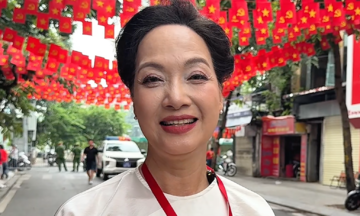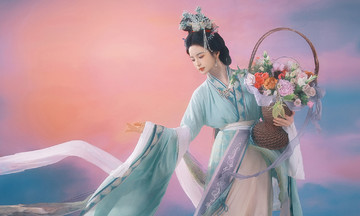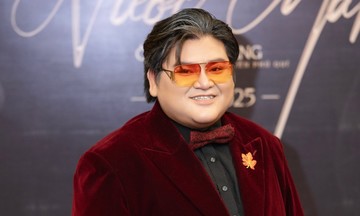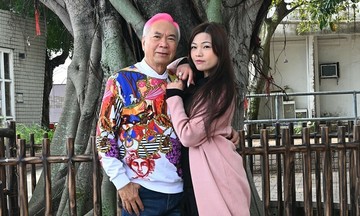 |
The art world mourned the passing of artist Le Thiet Cuong, who died at 63 on 17/7 from a rare form of cancer. His talent spanned various disciplines, including painting, illustration, ceramics, photography, and art curation. He was remembered as a significant loss to the Vietnamese art scene.
The image above is an oil painting titled "Monologue," a prime example of Cuong's minimalist style, featured in his 2024 exhibition "Duyen." The subject's face is incomplete, with only one eye visible, intriguing viewers with its unconventional arrangement.
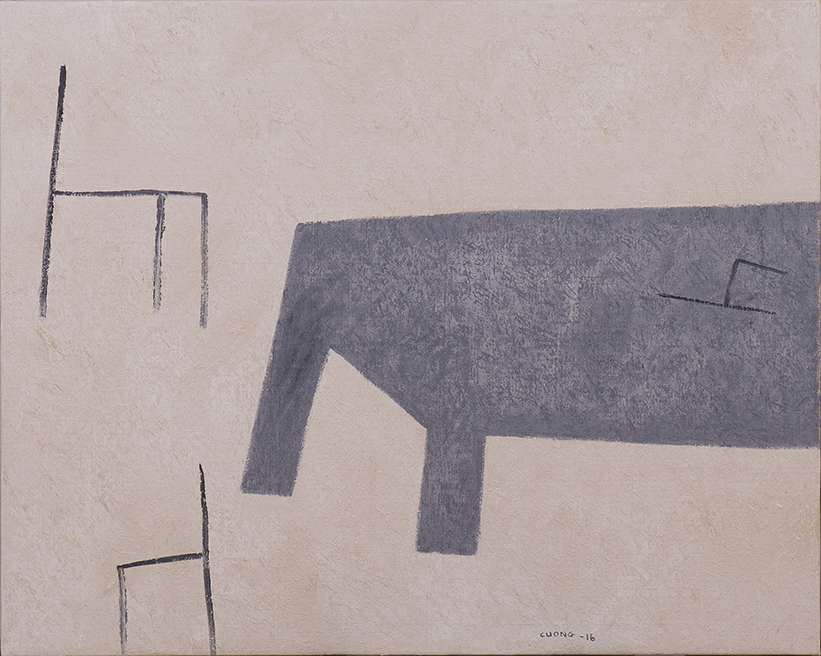 |
Cuong's "Table and Chairs," exhibited in 2018, showcases his predominant use of gray and black tones. Poet Nguyen Thuy Kha described his work as "unpredictable, each piece typically focusing on a single color, dissolving it across a quiet plane." Whether depicting people, objects, or landscapes, Cuong's simple lines and brushstrokes invite viewers to contemplate the layers of meaning embedded within.
 |
Cuong's painting "Liberation," inspired by the poetry of Dang Dinh Hung, debuted in a 2021 exhibition. Cuong was Hung's student for six years, until the poet's death in 1990, learning about art in general and painting in particular. "He discovered the seed of minimalism within me and nurtured me along this path," Cuong once said.
Dang Dinh Hung was known for his minimalist poetry, which emphasized individual words rather than narrative. Researcher Nguyen Thi Thuy Hanh noted, "Dang Dinh Hung played with the spacing between letters and punctuation, intentionally disrupting the continuity of sound and imagery."
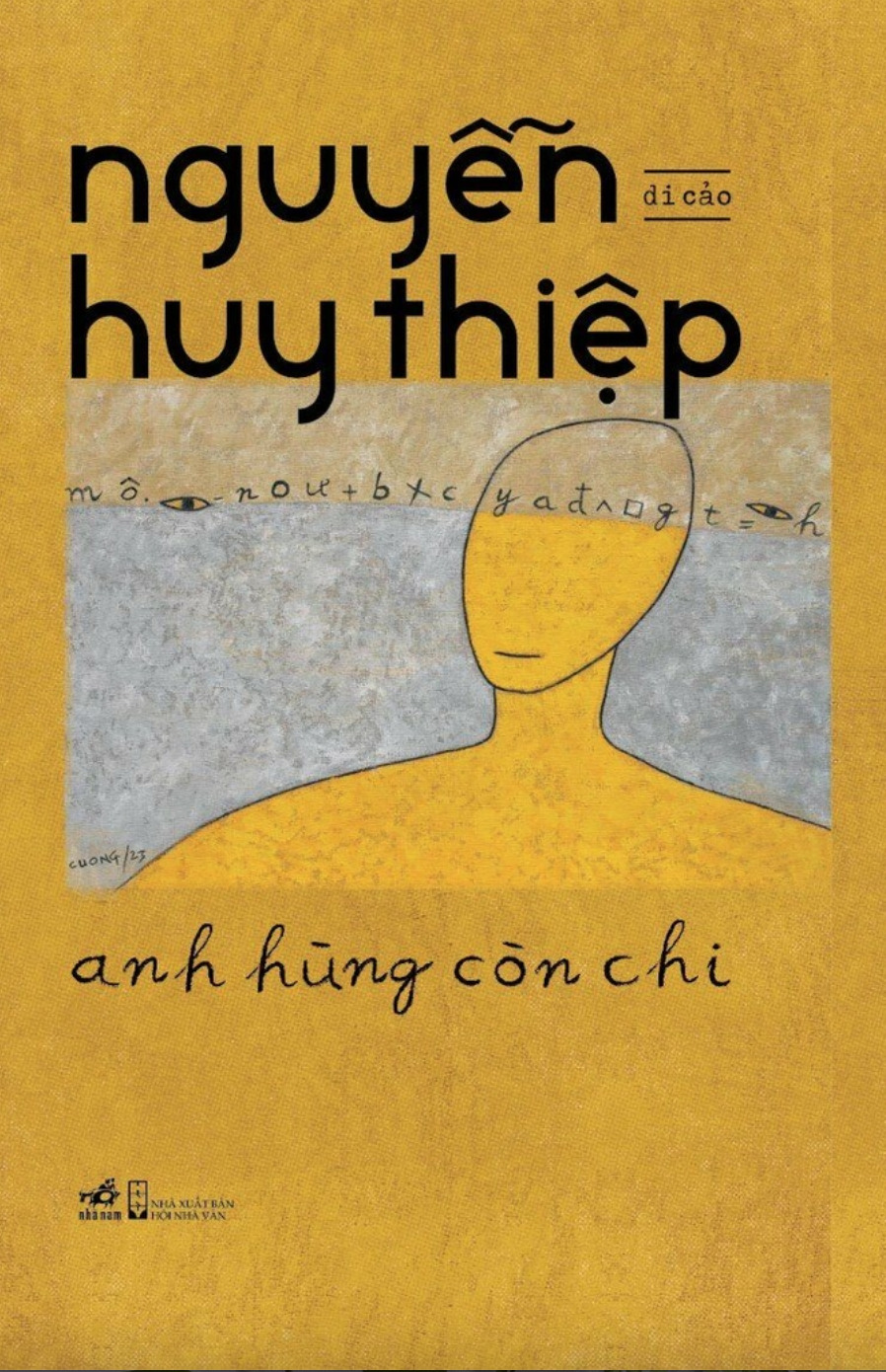 |
This minimalist style also characterized Cuong's illustrations. In 2023, he illustrated the cover of "What Remains of the Hero," the posthumous work of writer Nguyen Huy Thiep, a close friend. He also created cover art for books by writers Nguyen Quang Lap, Van Gia, Hoang Ngoc Hien, and critic Nguyen Thi Minh Thai. Photo: Nha Nam
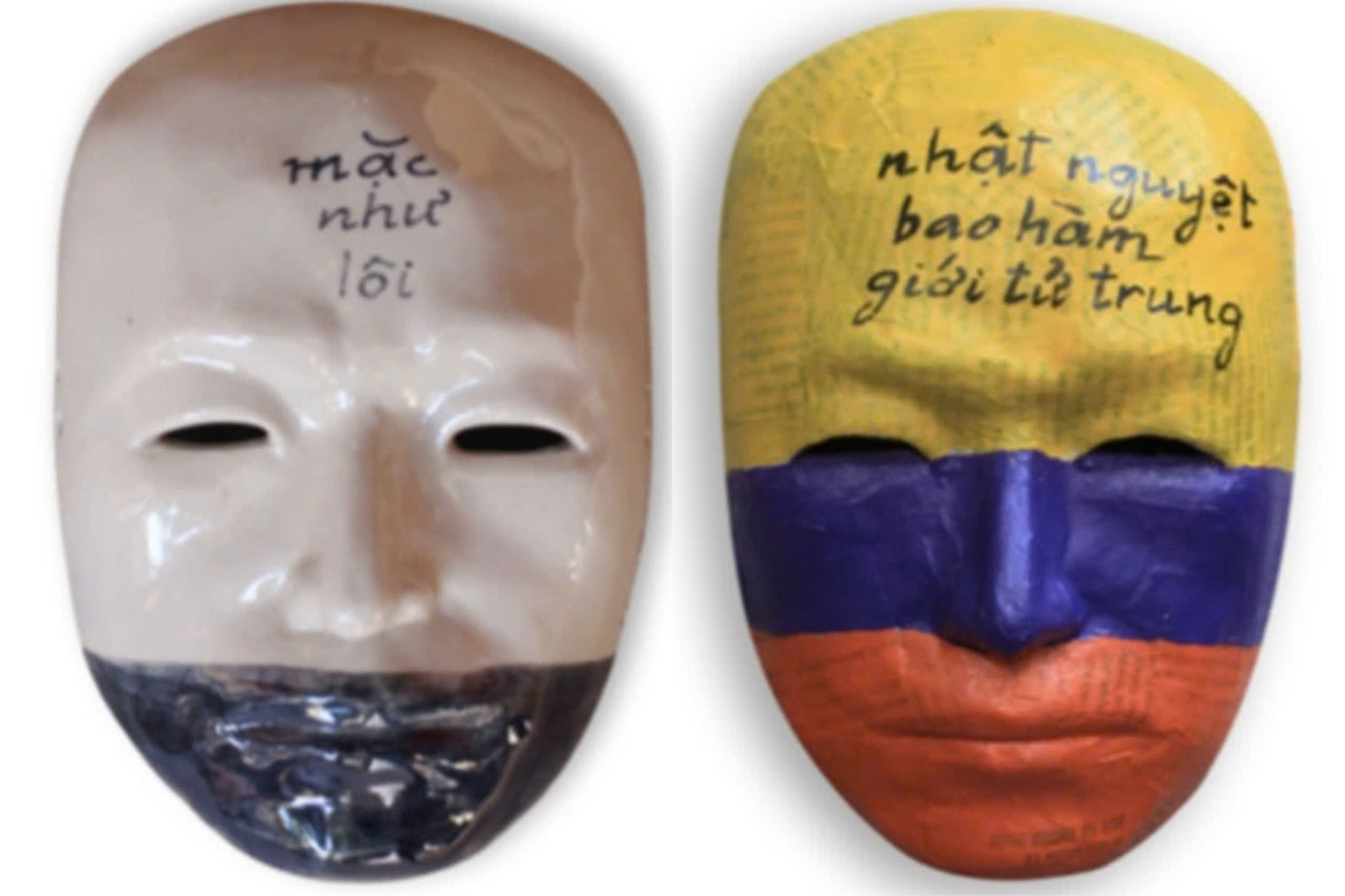 |
Cuong was an avid reader, particularly of Buddhist scriptures and Eastern philosophy. Raised in a Buddhist family, his spiritual life was deeply influenced by this tradition, which resonated with his minimalist artistic approach. He believed that painting was a form of meditation and spiritual practice.
Last September, Cuong collaborated with writer Nguyen Viet Ha and sculptor Dinh Cong Dat on the art project "The Other Side - Otherwise." Cuong inscribed Buddhist scriptures onto masks crafted by Dat from papier-mache and lacquer, molded from the faces of the three artists.
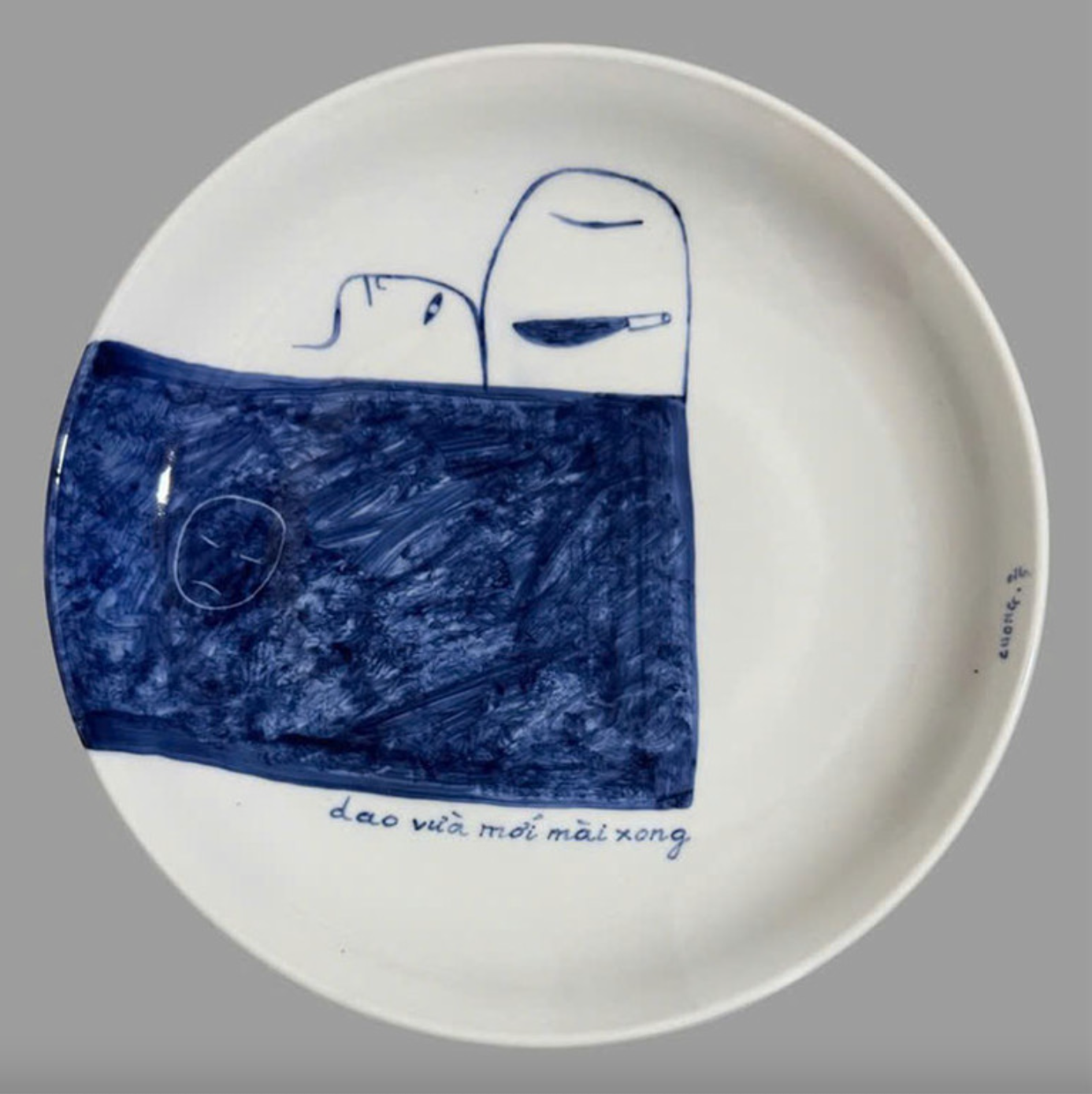 |
Cuong held a special love for ceramics, believing that this medium uniquely combined the elements of heaven, earth, and humanity, along with the five elements of metal, wood, water, fire, and earth. Lamenting the decline of traditional pottery villages, he integrated painting with ceramics to revitalize and celebrate the material, making it more accessible to the public.
The ceramic piece pictured above, inspired by the writing of Nguyen Huy Thiep, was displayed in an exhibition in April. Cuong admired the depth and layered meanings in Thiep's work, finding inspiration in his prose.
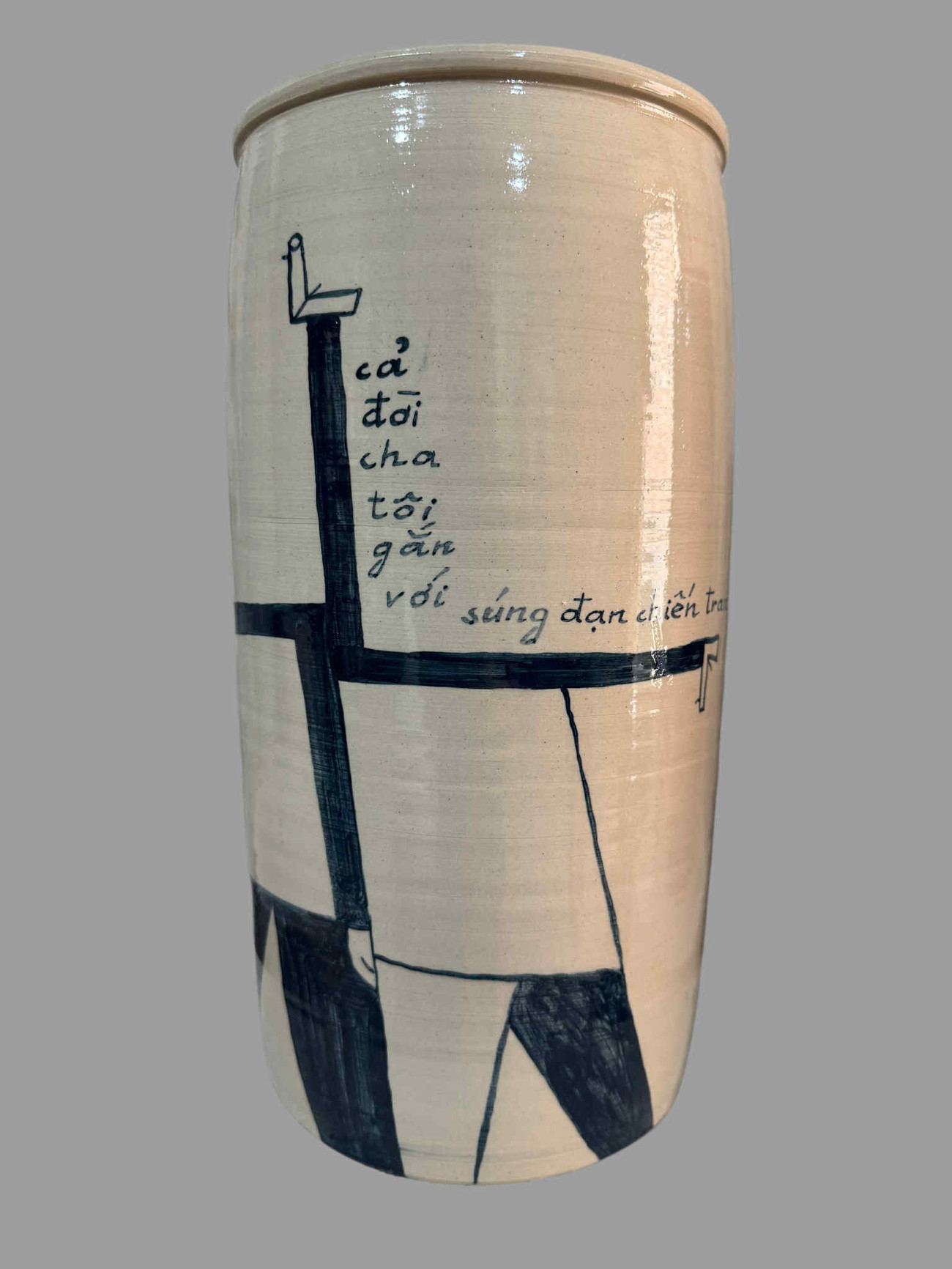 |
This is one of Cuong's final ceramic works, completed on 31/5. It features a quote from Nguyen Huy Thiep's short story "The Retired General": "My father's life was intertwined with guns and war."
In 1985, Cuong regularly cycled to Bat Trang, learning the entire pottery process, from firing the kiln to shaping the clay. This experience ignited his passion for the material, and he believed that Vietnamese artistry was embodied in ceramics.
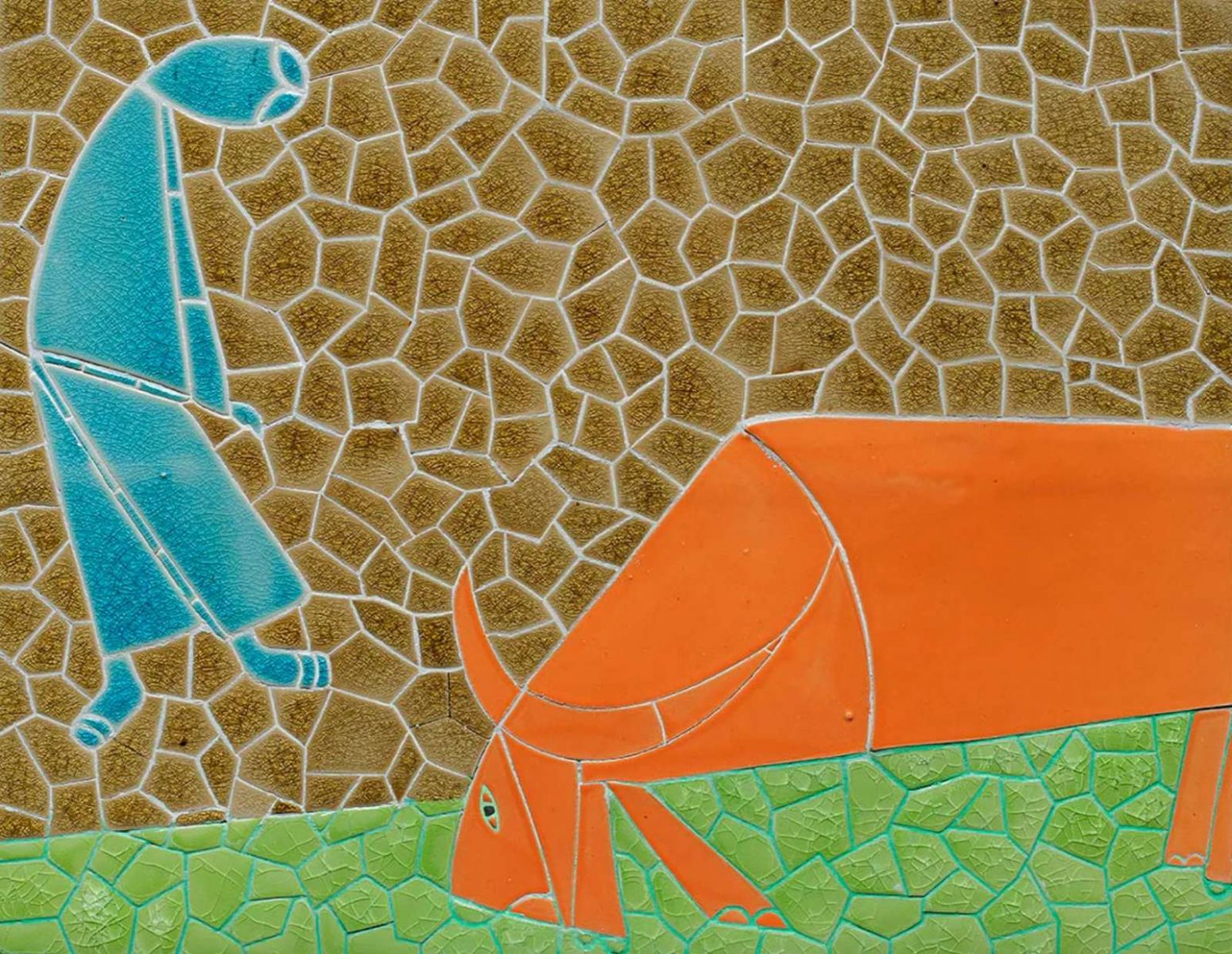 |
"Herding Buffalo," a ceramic mosaic by Cuong, demonstrates his meticulous craftsmanship and minimalist use of color. The piece reflects his love for Vietnamese culture, depicting a farmer, a buffalo, and a sickle.
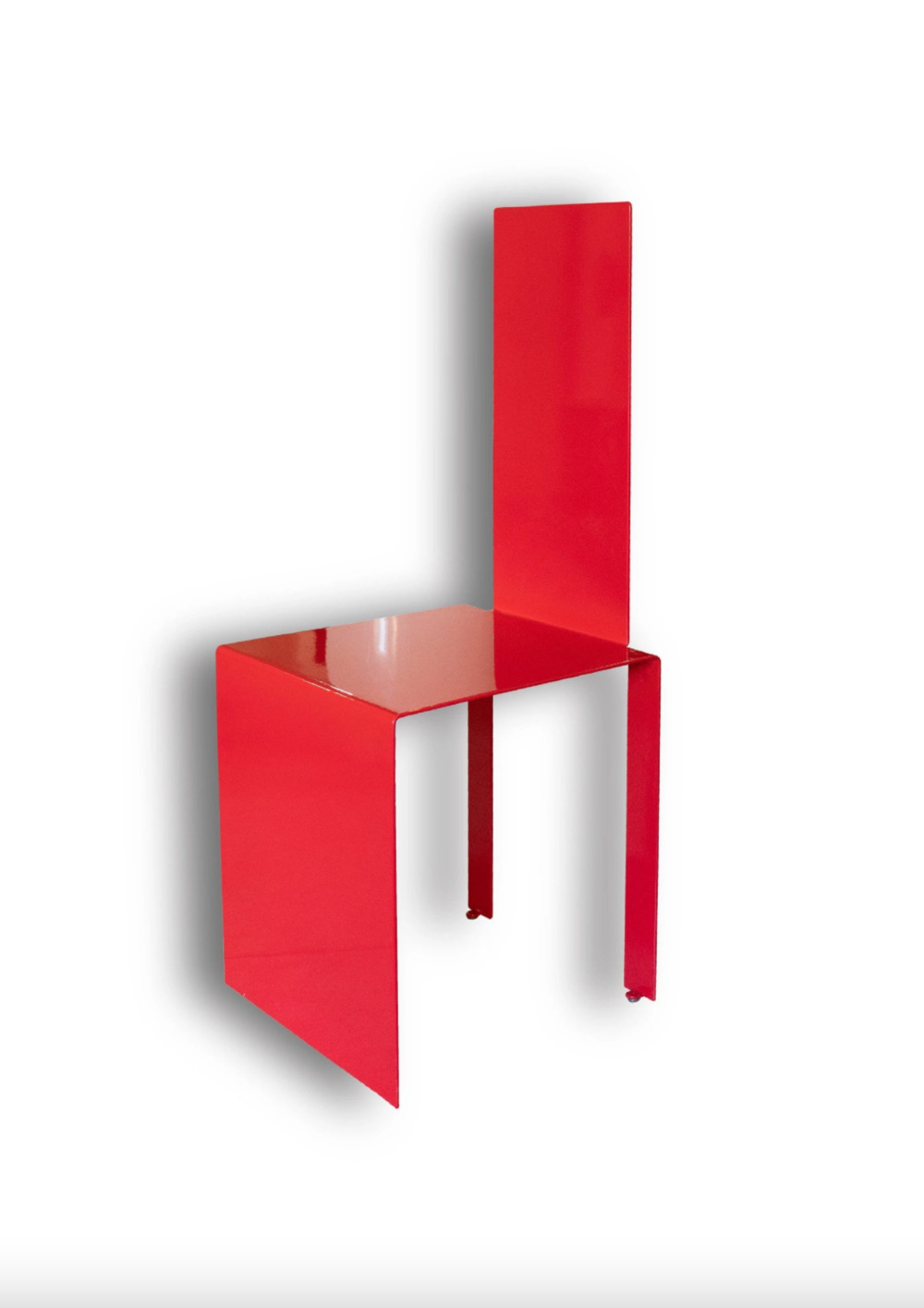 |
Another recurring theme in Cuong's work was chairs. His September 2019 exhibition, "Chair Stories," featured 30 pieces designed over 18 years, blending traditional and modern elements. Each chair typically featured a single color and simple form. The sculpted piece pictured here, made of welded iron, is a vibrant red, composed of interconnected, unbalanced forms.
Cuong believed that, "In architecture, especially modern architecture, chairs are not just for sitting. They are decorative elements, integral to the architecture. Chairs should not be confined to their literal meaning." His work blurred the lines between functionality and art, inviting individual interpretation.
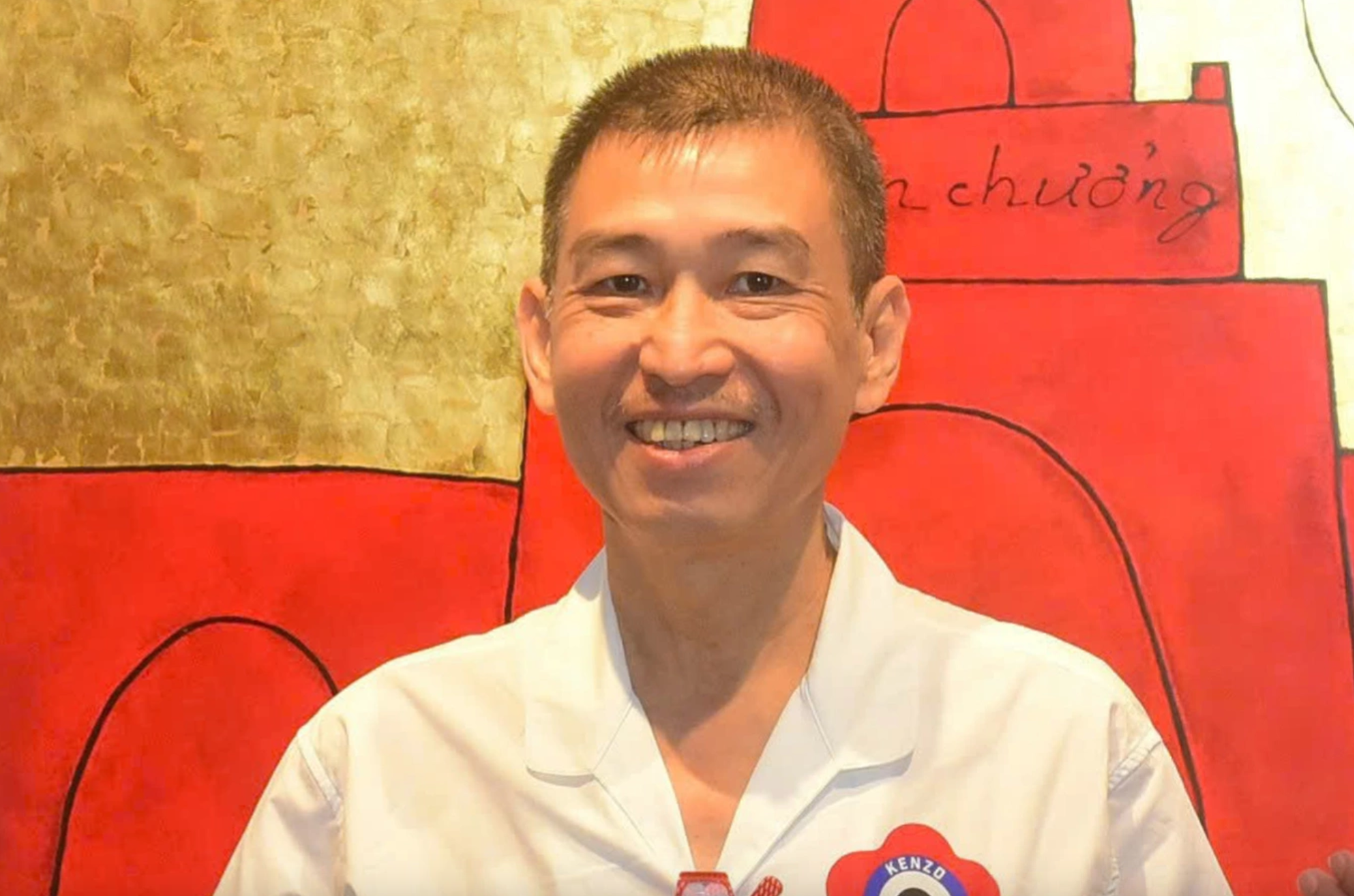 |
Le Thiet Cuong graduated from high school in 1984 and attended the Hanoi University of Theatre and Cinema from 1985 to 1990. For over 30 years, he pursued minimalist painting, exploring various techniques of shading, color blending, and line work. He once stated, "Minimalism is me, I am minimalism. It is my core identity, my DNA, my fingerprint, my identity card."
He also wrote art criticism, publishing "Seeing" (2017) and "Conversations with Painting" (2025). As a critic, he "relied solely on the painting itself for analysis, never listening to the artist's explanation of their work."
Phuong Linh
Photo: Archive



